
A local man watches as Ángela Troya tells him how the machinery ripped the roof from her house.

Once the 40 houses were destroyed, the inhabitants of these houses set fire to the rubble of their homes to avoid the cops from coming back with their machinery to demolish the makeshift homes built to withstand the night and the rain .

Weeks after the evictions took place, the families were living in a makeshift colective tent beside where their houses used to stand.


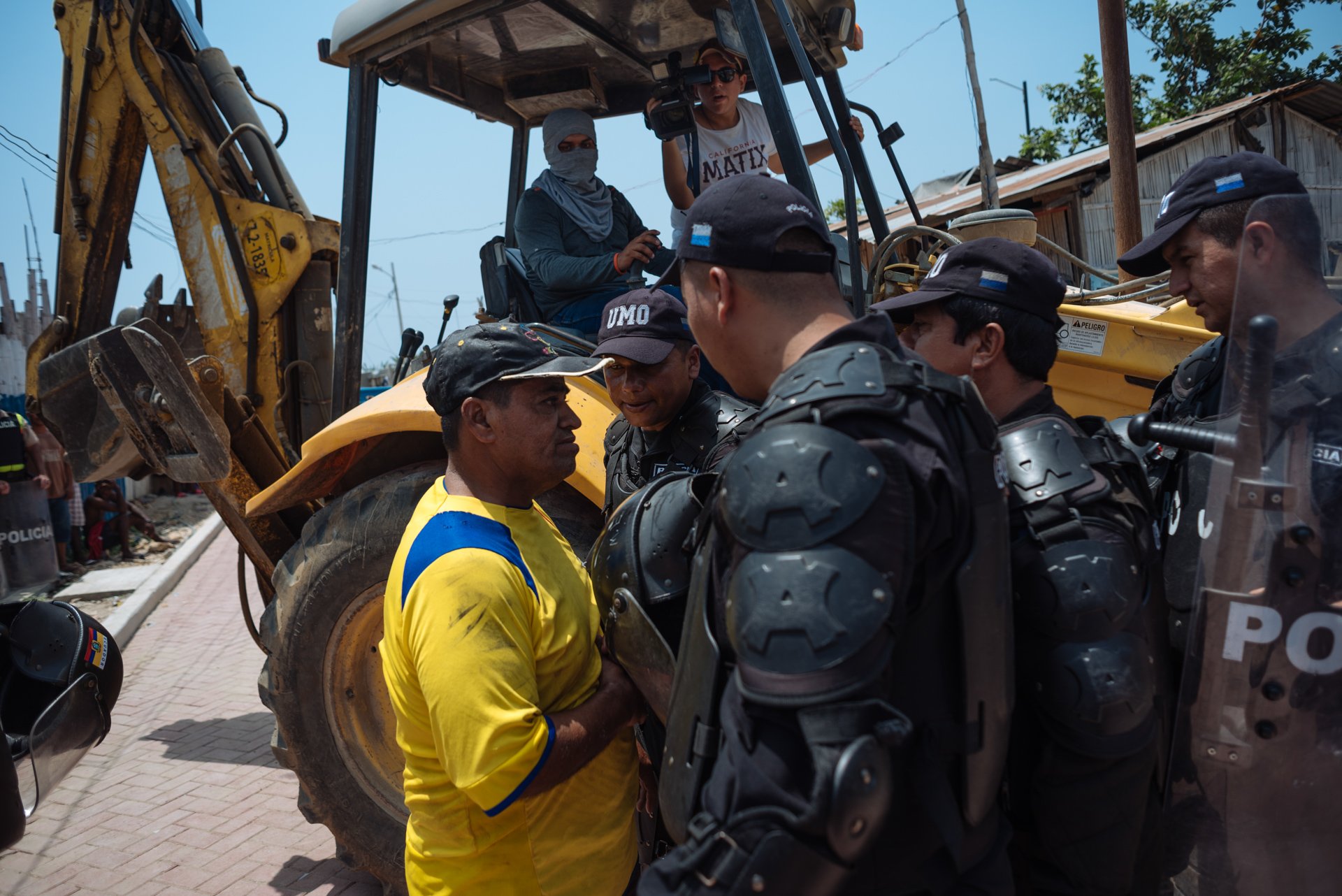
Police in riot gear intimidate Walter Moreira for him to stay away from his house, which is about to be destroyed to make room for a stretch of the boardwalk.

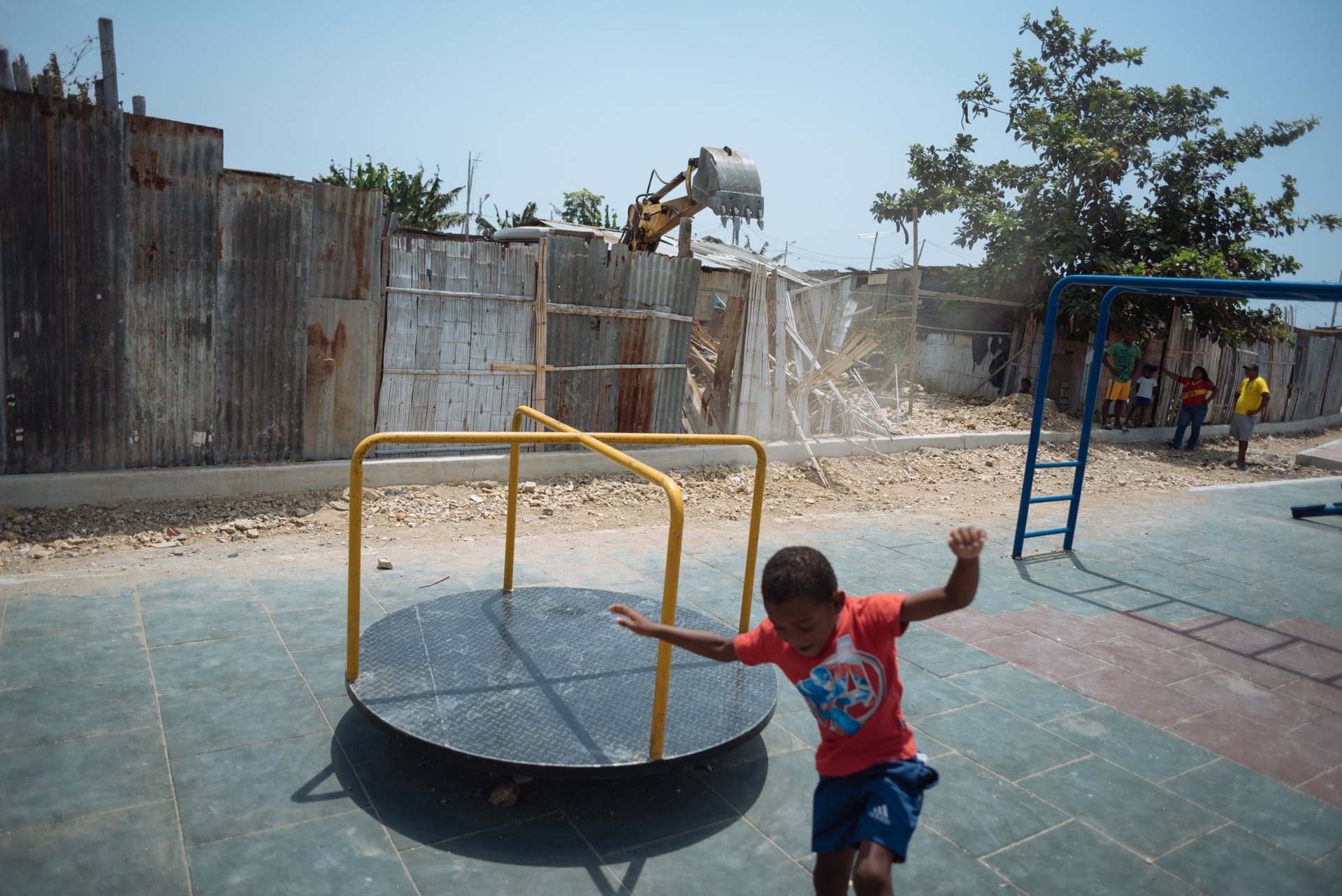
A child plays in a recreational area of the new Boardwalk of the Estero Salado while machinery employed by the state destroys a house to expand it.

A group of evicted peopel complain to a representative of the covernment about their living conditions and the lack of a paln to relocate the now homelesss families.


After strong rains, the mattresses where the evicted families slept were ruined because they were very close to the ground.

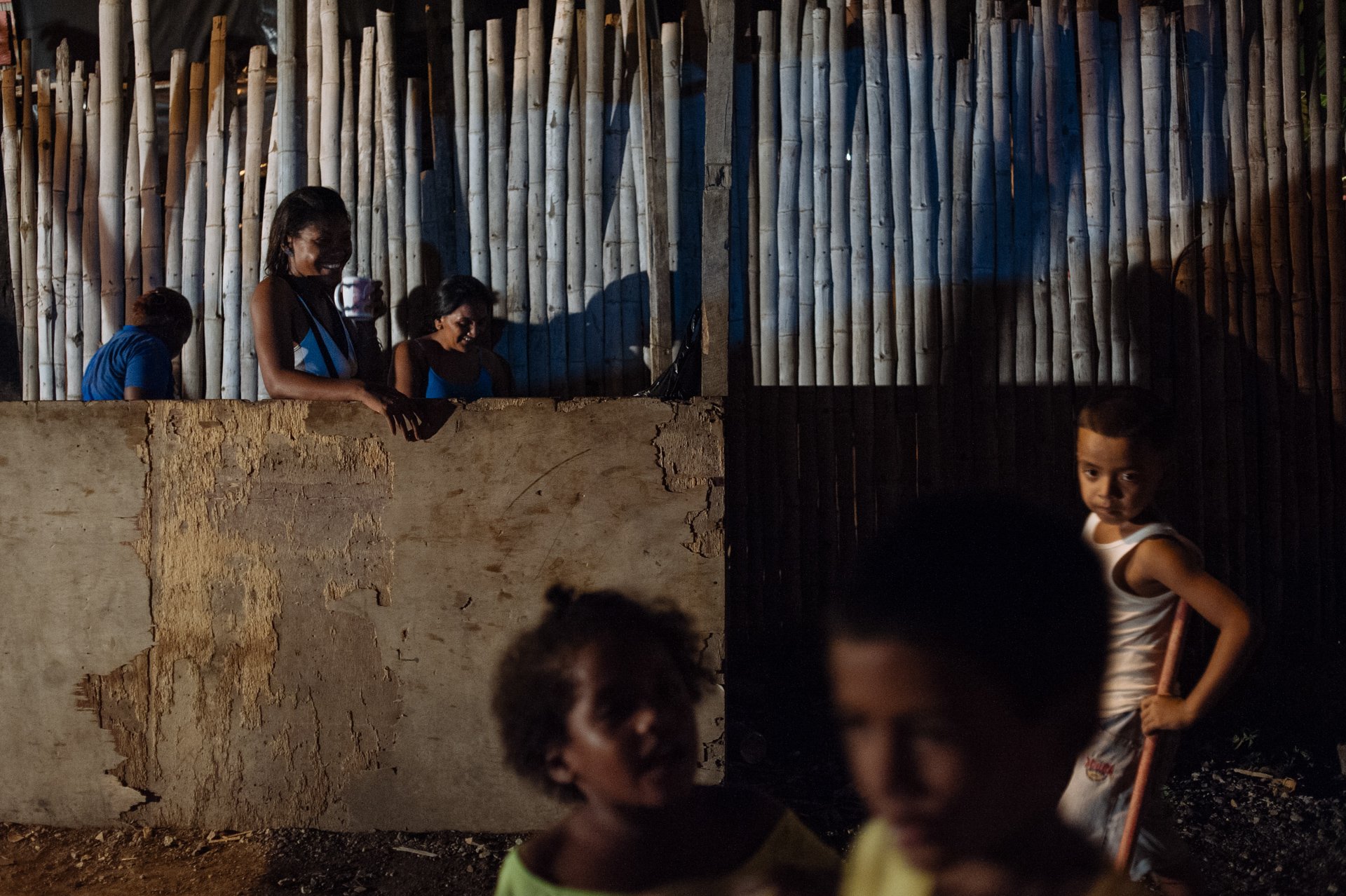
Evicted citizens join forces to take care of each other, so as to help in daily tasks like cooking or taking care of their children while they play.

Johanna comforts her newborn daughter. This is his second daughter, Johanna's house, where she lived with her first child, was destroyed along with 39 other houses while she was 7 months pregnant.

Rosa Caicedo looks at a portrait of John Paul II in her mother's house. Weeks before the eviction, the residents of the sector protested in a nearby avenue. Policemen arrived to suppress the demonstration. At this meeting Rosa (seven months pregnant) affirms she was attacked with a stun gun (taser) in her womb by a cop. Her son died in her womb because of this discharge (according to a medical report). Rosa sued the police who assaulted her, but failed to follow up the case because her work as a security guard leaves her very little free time, and she needs the money to buy a new house.
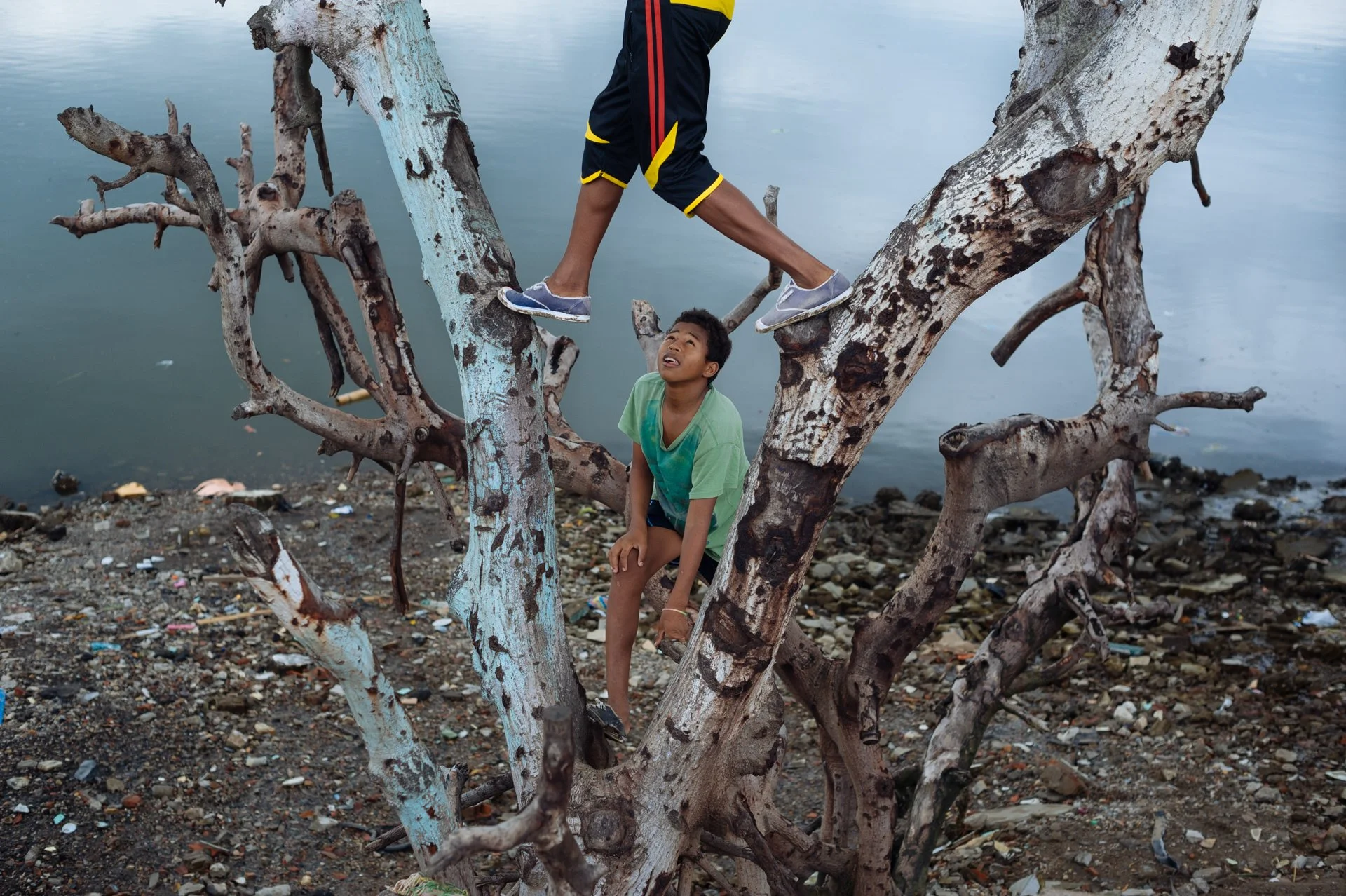
Part of the argument of the Technical Secretariat of irregular settlements for evicting the 40 families of the sector was that their houses were seated in a protected area, and that its existence there threatened the mangroves on the banks of the "Estero Salado".

A youngster plays by his new home in Monte Sinai. His mother joined the relocation plan of the Housing Ministry to buy a two room bamboo house for $ 5,877


Families stayed in temporal shelters until dontations and public atention decreased.


Yeckson "The Destroyer" Preciado is a retired boxer who lives in the area of eviction. Since early 2015 he gives free box classes to about 30 younglings of the community in an empty courtyard of one of the nearby houses. A few months ago, the Ministry of Sport handed him a space, equipment and a monthly salary to continue teaching.
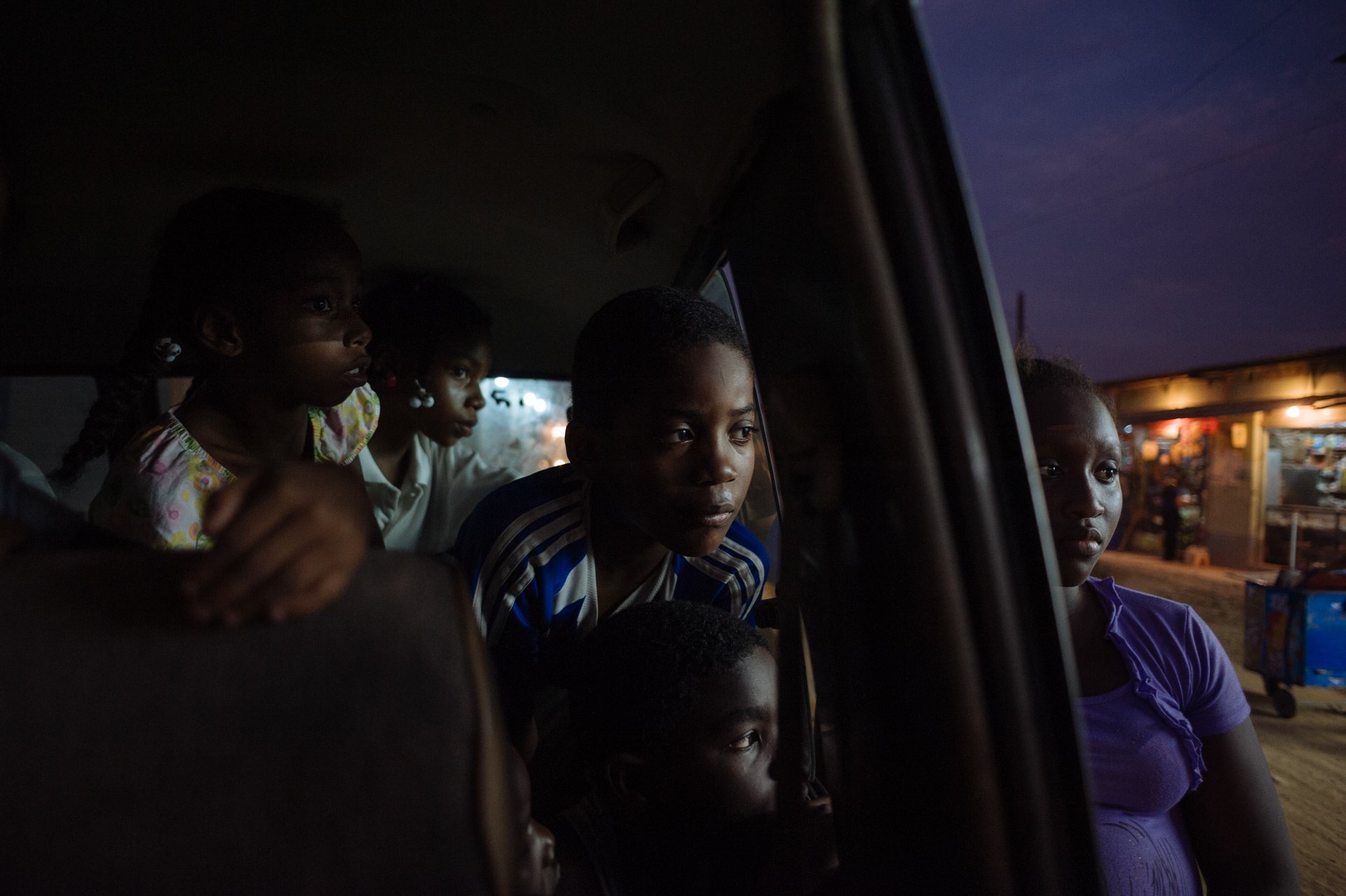
Those relocated to Mount Sinai complain of constant racist acts against them. In my car, former inhabitants of Isla Trinitaria seek for a 7 year old girl whose teachers left out of the local school without supervision. The girl appeared half an hour later, after taking a bus on her own to get home.
Creating Homeless
The State vs Isla Trinitaria
In 2015, 200 policemen dismantled the Melida Toral Cooperative in Isla Trinitaria, Guayaquil, leaving 40 families homeless on March 27. The families, living by the "Estero Salado," lost their homes and were seen sleeping on the streets with children and elderly members. The eviction, led by Julio Cesar Quiñonez, director of the Technical Secretariat for the Prevention of Irregular Human Settlements, resulted in a communication campaign #TrinitariaEnPaz on social media, showcasing the dire situation. The children found refuge in the Salesian Center, later moving to temporary tents provided by the Municipality of Guayaquil. After two months, the Ministry of Urban Development and Housing built cane houses that wont last long, costing $5,877, for the displaced families. Many residents have since relocated to the Housing Plan in Mount Sinai, while the demolished neighborhood has been replaced by a state-built boardwalk along the Estero Salado, which has become a common drug trafficking site.